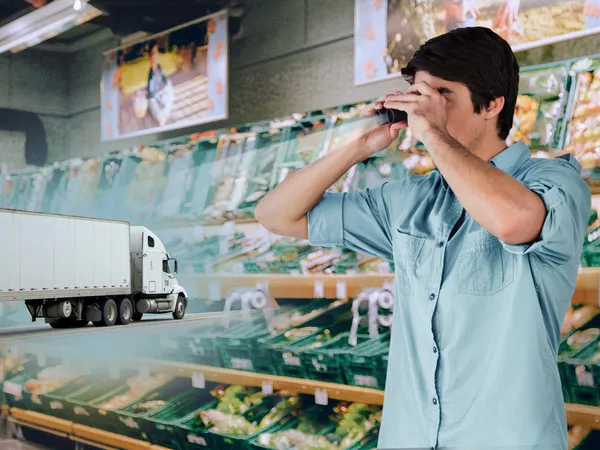Whether corporation or small business, the COVID pandemic has undoubtedly caused the supply chain to buckle. The first few weeks of the nationwide shelter-in-place were a time when availability of many products was extremely limited due to panic buying. There were similar situations everywhere, and shipments to refresh the shelves were a long time coming. The just-in-time supply chain model, created to keep inventory levels low, along with poor availability of shipping containers, as well as border and port closures, had resulted in major shortages. Panic buying (massive increase in demand), COVID-stricken workers and logistics issues, created the perfect supply chain storm. The world was forced to acknowledge that the current supply chain model is not as resilient as previously thought.
Companies were in trouble, as evidenced by a 44 percent increase in contract cancellations, also known as force majeure. According to a survey conducted by the Wall Street Journal in March 2021, almost 50 percent of businesses experienced poor product availability or other supply chain issues. The prices of some products rose substantially, up to five times the normal amount in some cases. In the produce industry, flight cancellations hampered the export of luxury items like exotic fresh fruit and cut flowers.

Lack of visibility
As the economy has begun to re-open, there are still challenges. Because manufacturers and carriers are being called upon for COVID vaccine distribution, a large number of businesses continue to deal with product delays.
The consensus among all industries is that there is a serious lack of visibility. An increase in e-commerce shone a light on how supply chains are challenged when manufacturers can only see a product at two points: when it is ordered and when it is delivered to the customer. In most cases, the time between ordering and delivery is completely undetected. Likewise, poor data has plagued many businesses, affecting informed decision-making. When shipping perishable commodities like produce, lacking visibility of the exact location and condition puts the shipper at risk of financial loss due to temperature abuse, late arrivals, and other issues. Food loss and waste are major societal problems which were exacerbated during the pandemic but can be addressed with enhanced visibility and data.
Real-time monitoring
As an innovator of cold chain management and environmental monitoring solutions, DeltaTrak provides products which offer visibility and data, enabling clients to safely transport perishable goods, both domestically and abroad. Real-time monitoring, in particular, protects produce shippers from spoilage and the associated costs, by giving a constant view of cargo location and temperature, while in transit. DeltaTrak client Hwy Haul provides real-time loggers to their customers to help prevent rejected loads. "I think the transparency is definitely the biggest advantage. The industry-wide rejection rate is 10-14 percent. We have cut that in half," says Ruby Wang, Product Manager. Click here to see DeltaTrak's real-time monitoring devices.
While the needs of each industry are unique, supply chain experts agree on the actions managers and leaders can take, as we scream a fond farewell to the pandemic. In Supply Chain 24/7’s, “Fundamental Supply Chain Changes in a Post-COVID-19 World”, the top three recommendations for business recovery are:
- Create a vision and culture of true end-to-end visibility;
- Leverage technology that speaks to the vision;
- Implement company-wide continuous improvement.
Kenco, a third-party logistics company, conducted their “State of Supply Chain Innovation Survey” and focused on understanding how supply chain professionals have fared during the COVID-19 pandemic. Ninety percent of participants indicated they believe “visibility technology is a priority or high priority” in meeting customer demands.
Globally, many companies failed during the pandemic. Others are hanging by a thread, trying to fight their way back. A few others have not only survived but found ways to excel. The organizations that continue to make gains will be those who prioritize visibility and data. The ability to see the in-transit location and condition of produce, in real time, will drive the recovery of the supply chain, and ultimately the economy.
 For more information:
For more information:
Linda Ng
DeltaTrak
Tel: 925-249-2250
lng@deltatrak.com
www.deltatrak.com
